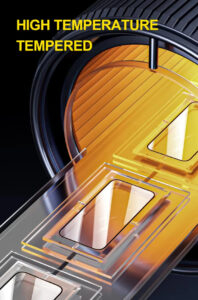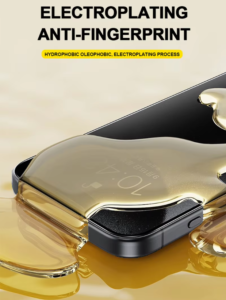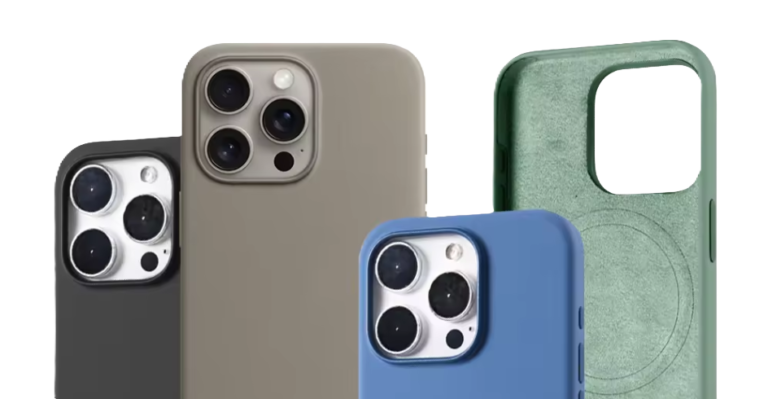The Science of Tempered Glass: Protecting Your Screen
Tempered glass is a remarkable material that has revolutionized the way we protect our screens. From smartphones to tablets, this innovative technology ensures durability and safety without compromising clarity or touch sensitivity. But what makes tempered glass so special? Let’s dive into the science behind it.
What is Tempered Glass?
Tempered glass is a type of safety glass that undergoes a specialized heat-treatment process to enhance its strength and durability. Unlike ordinary glass, it is designed to withstand significant impact and resist scratches, making it ideal for protecting delicate screens.
How is Tempered Glass Made?
The manufacturing process of tempered glass involves two key steps:

- Heating: Ordinary glass is heated to extremely high temperatures, typically around 600°C (1,112°F).
- Rapid Cooling: The heated glass is then cooled rapidly using air jets. This process, known as quenching, creates internal stresses that make the glass much stronger and more resistant to breakage.
The Benefits of Tempered Glass
- Superior Strength:
- Tempered glass is up to four times stronger than untreated glass. It can withstand accidental drops, reducing the likelihood of screen damage.
- Tempered glass is up to four times stronger than untreated glass. It can withstand accidental drops, reducing the likelihood of screen damage.
- Shatter-Resistant:
- When broken, tempered glass shatters into small, blunt-edged fragments instead of sharp shards, minimizing the risk of injury.
- When broken, tempered glass shatters into small, blunt-edged fragments instead of sharp shards, minimizing the risk of injury.
- Scratch Resistance:
- Its tough surface protects against everyday scratches from keys, coins, or other abrasive objects.
- Its tough surface protects against everyday scratches from keys, coins, or other abrasive objects.
- Enhanced Clarity and Touch Sensitivity:
- High-quality tempered glass maintains the screen’s original clarity and responsiveness, ensuring a seamless user experience.
Key Features to Consider

- High Alumina Glass:
- Good quality premium tempered glass screen protectors are made using high alumina glass. This type of glass has enhanced strength and resistance to scratches and impact. High alumina glass also offers better optical clarity and is less prone to distortion, ensuring your screen protector delivers top-notch performance.
- Good quality premium tempered glass screen protectors are made using high alumina glass. This type of glass has enhanced strength and resistance to scratches and impact. High alumina glass also offers better optical clarity and is less prone to distortion, ensuring your screen protector delivers top-notch performance.
- Adhesive (Glue):
- The quality of the adhesive used in tempered glass screen protectors is critical. Premium protectors use strong, residue-free AB glue that ensures a bubble-free application and prevents the protector from peeling off over time.
- The quality of the adhesive used in tempered glass screen protectors is critical. Premium protectors use strong, residue-free AB glue that ensures a bubble-free application and prevents the protector from peeling off over time.
- Curvature:
- With many devices featuring curved edges, modern tempered glass protectors often come with a 2.5D or 3D curvature. This design ensures edge-to-edge protection and a smooth, natural feel that aligns with the device’s contours.
- With many devices featuring curved edges, modern tempered glass protectors often come with a 2.5D or 3D curvature. This design ensures edge-to-edge protection and a smooth, natural feel that aligns with the device’s contours.
- Thickness:
- Tempered glass screen protectors are available in various thicknesses, typically ranging from 0.2mm to 0.5mm. Thinner protectors offer greater touch sensitivity and a nearly invisible profile, while thicker ones provide enhanced durability and impact resistance.
- Additionally, tempered glass is often designed according to the screen’s curves. The thickness of the glass, including the glue layer, may not be uniform across the entire surface. The glue thickness may vary from 180 μm to 380 μm across the screen. This ensures a snug fit, but it also means that tempered glass of the same size may not fit every screen perfectly. Improper fitting can lead to raised edges or gaps where the center does not stick properly.
- Oleophobic Coating:
- High-quality tempered glass often features an oleophobic coating that repels fingerprints and smudges, keeping your screen cleaner for longer. Advanced protectors may include an electroplated oleophobic layer, which provides an even smoother finish and increased durability compared to standard coatings.
Why Choose Tempered Glass for Your Screen Protector?
Tempered glass offers a perfect balance of protection and usability. Its ability to absorb impact and resist scratches makes it a reliable choice for safeguarding your device. Unlike plastic protectors, tempered glass provides a more premium feel and is easier to clean.
The Science Behind the Protection
The strength of tempered glass lies in its internal structure. The rapid cooling process creates compressive stress on the outer surface and tensile stress inside. This unique balance makes it extremely tough and resistant to external force. If a force exceeds its limit, the glass breaks into small, safe fragments rather than dangerous shards.
Maintaining Your Tempered Glass
To ensure the longevity of your tempered glass screen protector:
- Clean it regularly with a soft, lint-free cloth.
- Avoid using abrasive cleaning agents that could damage the surface coating.
- Replace the protector if it develops cracks or severe scratches to maintain optimal protection.
Conclusion
Tempered glass is not just a protective layer; it’s a blend of science and innovation that keeps your devices safe. By understanding its unique properties and benefits, you can appreciate the technology that goes into safeguarding your screens. Next time you invest in a screen protector, remember the remarkable science of tempered glass that ensures your device’s safety and longevity.
Get the Best in Screen Protection!
Discover the science behind tempered glass and choose the protector that combines strength, clarity, and innovation. Browse our collection.


